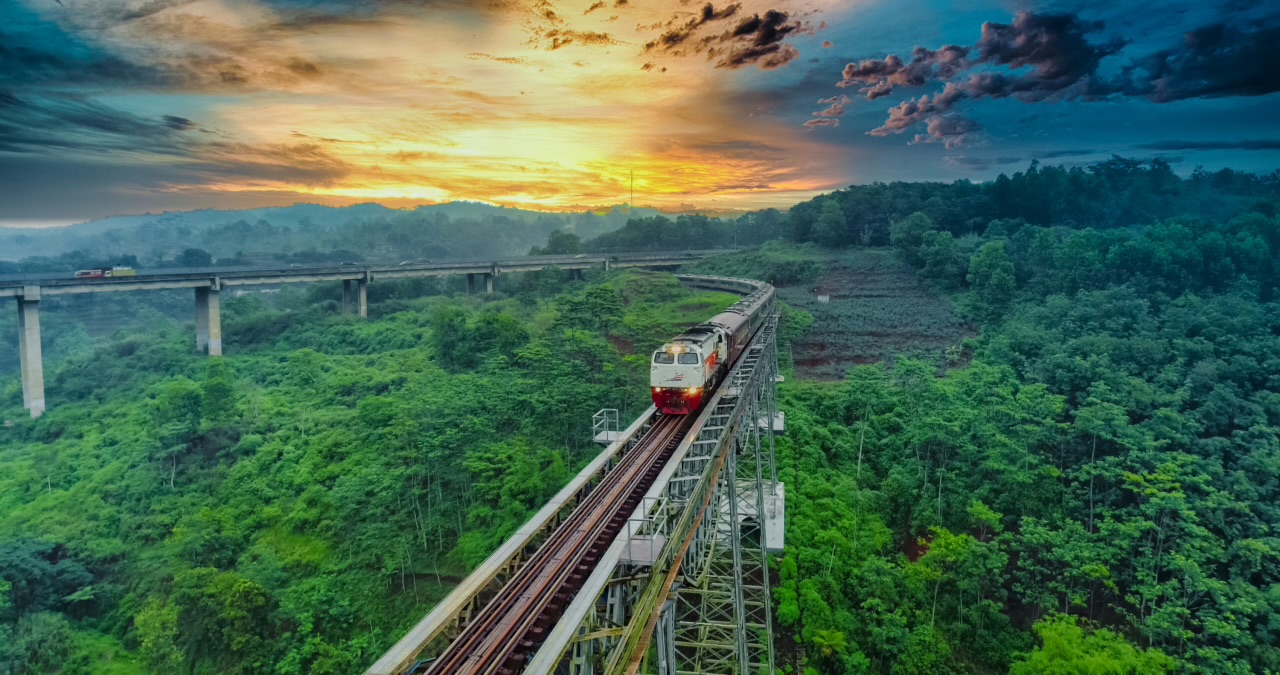
General Information
More and more tourists are choosing trains as their main mode of transportation in Indonesia.
On the island of Java, the transportation infrastructure is the most developed and modern. Railways also operate on Sumatra (both freight and passenger services), Sulawesi (freight and passenger), and Kalimantan (freight only), but their networks are less extensive.
On Bali, the railway project is still under development.
Traveling by train is convenient if you want to visit several places on Java. For example, tickets from Banyuwangi to Lumajang Station (near Bromo-Tengger-Semeru National Park) start at 30,000 IDR, and the journey takes just 3.5 hours — much faster and cheaper than traveling by car via toll roads.
Moreover, train travel is far more comfortable and safer.
Among the most popular destinations for international tourists are Yogyakarta, Gambir (Jakarta), Bandung, Gubeng (Surabaya), and Malang. Routes to Semarang, Probolinggo, and Pasar Turi (Surabaya) are also in high demand.
Other attractive destinations include Jember, Mojokerto, Banyuwangi, Surakarta (Solo Balapan Station), Purwokerto, Cirebon, and three stations on Sumatra (Tebing Tinggi, Lalang, and Medan).
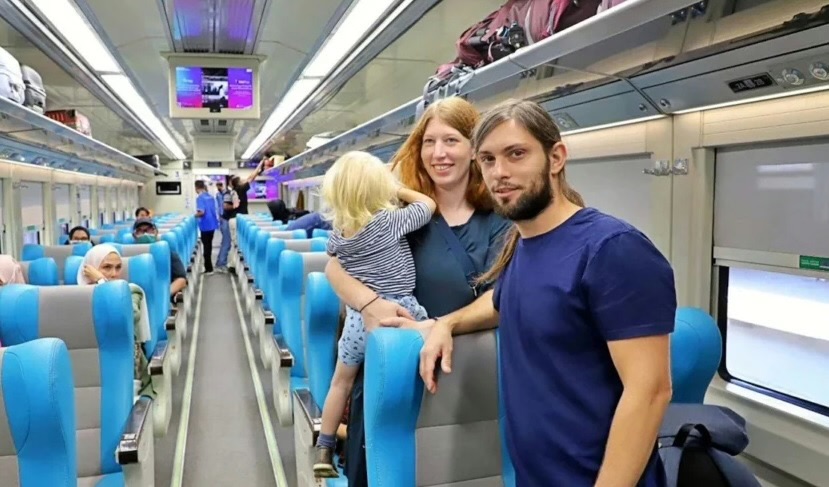
According to Kereta Api Indonesia (KAI), in January 2025, the number of foreign passengers reached 44,502 — a 26.06% increase compared to the same period in 2024 (35,303 passengers).
Throughout 2024, 615,055 foreign travelers used long-distance trains, with a peak in September (65,916 passengers).
KAI actively introduces innovations to make train travel even more attractive.
Modern trains feature stylish interiors, ergonomic seats, USB charging ports, and free Wi-Fi.
The Access by KAI mobile app simplifies booking and payment, while promotional deals make travel more affordable.
The growing interest in rail travel shows that KAI successfully combines modern technology, comfort, and environmental care, making trains one of the best ways to explore Indonesia.
Additionally, trains in Indonesia are known for their punctuality, allowing travelers to plan their time accurately.
Rail routes pass through scenic areas — rice fields, volcanoes, and tropical forests — making the journey not only comfortable but also visually stunning.
Trains also stop at key tourist destinations like Yogyakarta (gateway to Borobudur Temple), Bandung (fashion and culinary capital), and Surabaya (the largest city in East Java).
For eco-conscious travelers, trains are a great choice, as they cause significantly less environmental impact compared to flying or driving.
Passenger Rail Services
Java Island
Java is the center of Indonesia’s railway network, hosting over 80% of the country’s total rail lines.
Passenger services on Java include:
- Commuter Trains: Connecting major cities like Jakarta, Bandung, Surabaya, and Yogyakarta. In Jakarta, KRL Commuterline serves millions daily.
- Intercity Trains: Available in economy and premium classes (such as Argo and Executive). Popular routes include Jakarta–Bandung, Jakarta–Surabaya, and Yogyakarta–Surabaya.
- Tourist Trains: Such as Prambanan Express (Yogyakarta–Solo) and Bromo Express (Surabaya–Probolinggo).
Tickets are available online and offline.
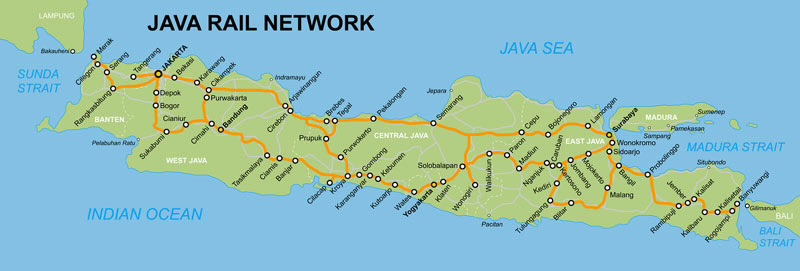
Double Tracks
Indonesia continues to expand its railway capacity by constructing additional tracks, which improves speed and train frequency.
Key double-track routes on Java:
- Jakarta–Bandung: One of the busiest, fully double-tracked.
- Jakarta–Surabaya: Partially upgraded, work ongoing.
- Yogyakarta–Solo: Fully double-tracked and popular among tourists.
Whoosh
Whoosh is Indonesia’s first high-speed train connecting Jakarta and Bandung.
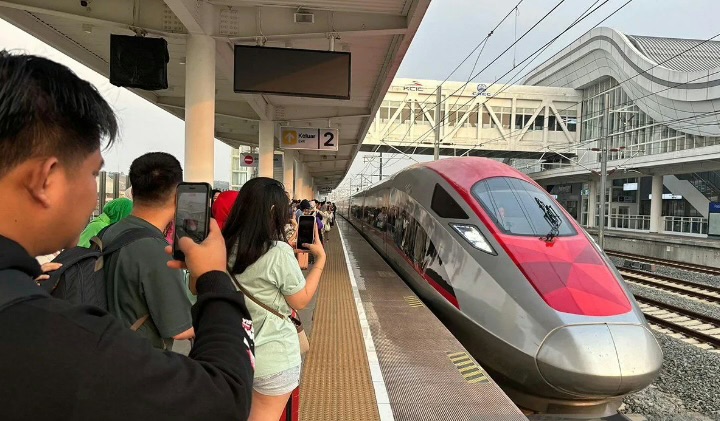
The 142 km line runs through four main stations: Halim (Jakarta, near Halim Airport), Karawang, Padalarang, and Tegalluar (Bandung).
Sumatra Island
Sumatra’s rail network is less developed but actively used in several provinces:
- North Sumatra: Routes between Medan, Tanjung Balai, and Pematangsiantar.
- South Sumatra: Line connecting Palembang and Lubuklinggau.
- West Sumatra: Routes around Padang.
Tickets are available online and offline.
Sulawesi Island
Currently, tickets can only be purchased at station counters; online sales are not yet available.
Development Prospects
- High-speed rail expansion: In 2023, the Jakarta–Bandung high-speed line (KCIC project) was launched, reducing travel time to just 40 minutes.
- Network expansion: Plans are underway to extend services in Sumatra, Kalimantan, and Bali.
- Sustainability efforts: KAI promotes electric trains and the use of renewable energy.
Indonesia’s railways continue to develop, playing a key role in the country’s economy and tourism.
Freight Transportation
On Java, freight rail mainly transports:
- Coal: From mines in the east to export ports.
- Cement and construction materials: Between factories and cities.
- Agricultural products: Such as sugarcane and rice.
In Sumatra, freight trains play a major economic role, transporting coal from mines in South Sumatra and Lampung to ports, as well as palm oil products from plantations to factories and ports.
On Kalimantan, rail transport is mainly linked to coal mining, connecting mines to ports like Tanjung Batu. Timber is also transported by rail from the island’s interior to the coastal areas.
Where to Buy Train Tickets?
Tickets can be purchased online through the official KAI website (kai.id), the Access by KAI app, or third-party platforms like Tiket.com, Tokopedia, Shopee, and Lazada.
After purchase, e-tickets are sent to your email and phone.
Offline, tickets are available at travel agents, Alfamart and Indomaret convenience stores, and train station ticket counters.
Arrive at the station 30–50 minutes before departure.
Before boarding, passengers must print boarding passes at the station kiosks by entering their booking code (Kode Pemesanan) and selecting passengers for printing (Cetak button).
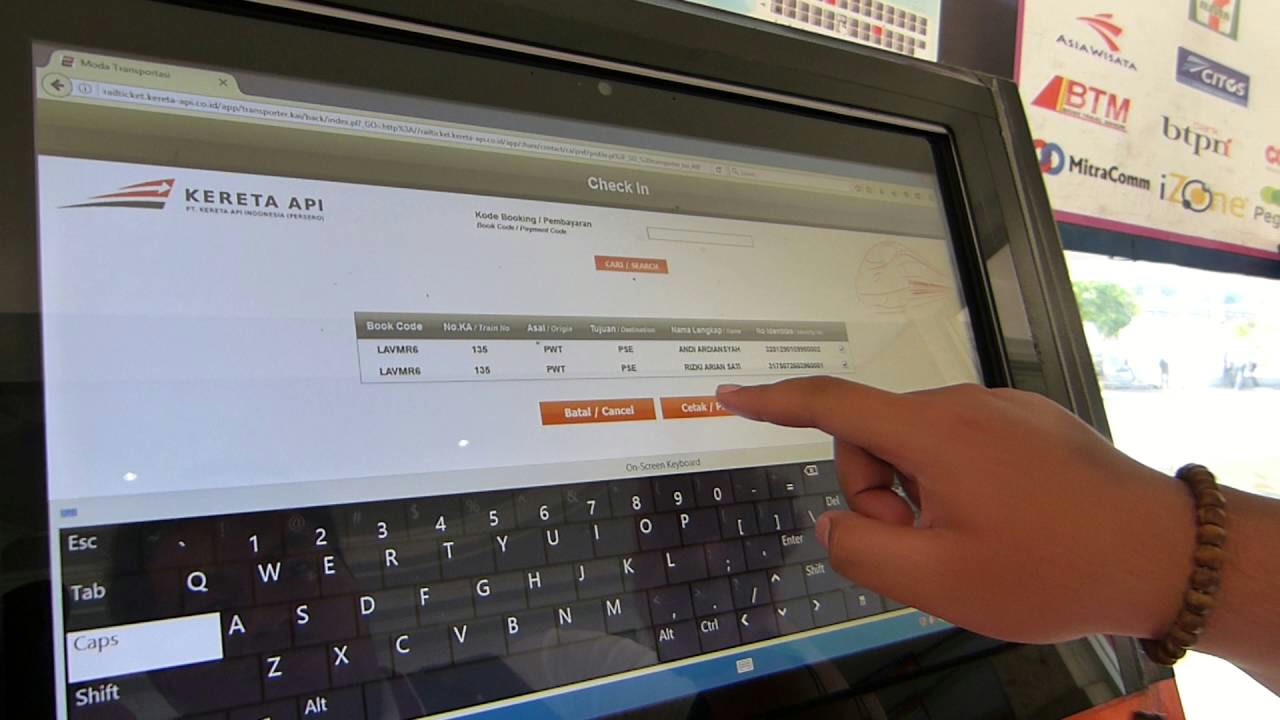
At boarding, you must present both the boarding pass and a valid ID.
Traveling from Bali to Jakarta by Train
Taking the train from Bali to Jakarta is generally not cost-effective, as plane tickets can be found for as low as 600,000 IDR one way.
There is only one direct train route from Banyuwangi (East Java) to Jakarta.
This journey costs around 1,000,000 IDR per person, including a budget overnight stay (~200,000 IDR) in Banyuwangi.
The bus from Kuta (Bali) to Banyuwangi costs about 80,000 IDR, and the train ticket is 600,000–800,000 IDR.
You can also travel via connections through Surabaya (Gubeng Station), Madiun (Madiun Station), or other cities.
Trains Banyuwangi – Jakarta
(eco-friendly travel option)
• Departure: Banyuwangi City Train Station
• Arrival: Jakarta (all stations)
• Date: Thu, March 6
• Any time
• 9 trains per day
Fastest travel time: 16 hours 5 minutes
Options:
• 07:16 – 01:28 (+1 day) → 18 hr 12 min, 1 transfer
• 07:16 – 03:10 (+1 day) → 19 hr 54 min, 1 transfer
• 11:15 – 04:10 (+1 day) → 16 hr 55 min, 1 transfer
• 11:15 – 04:14 (+1 day) → 16 hr 59 min, 1 transfer
• 11:15 – 05:45 (+1 day) → 18 hr 30 min, 1 transfer
• 16:01 – 08:06 (+1 day) → 16 hr 5 min, no transfer (Blambangan Ekspres, fast)
Last-Minute “Go Show” Tickets
Last-minute discounted tickets (“Go Show”) can be purchased less than 2–3 hours before the train’s departure.
Available at station counters, KAI’s website, and the Access by KAI app.
These tickets are great for spontaneous trips, but availability is limited.
Prices start at just 15,000 IDR.
Sources: kompas, suarasurabaya

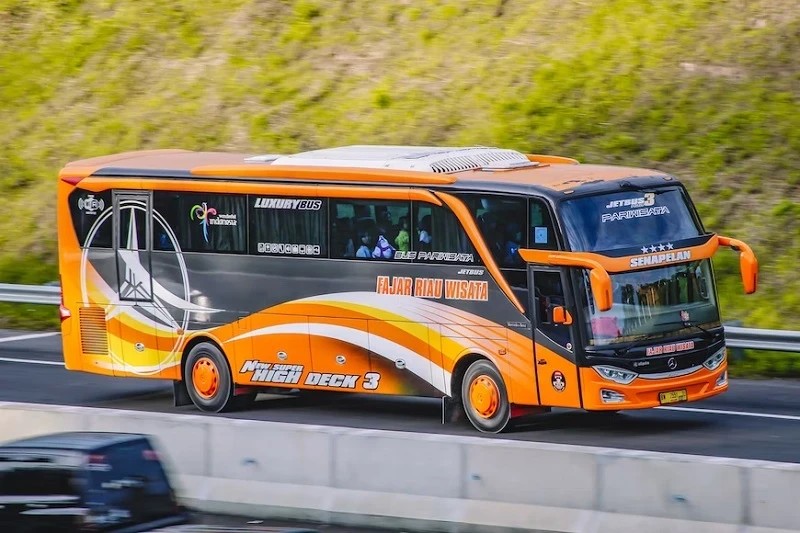
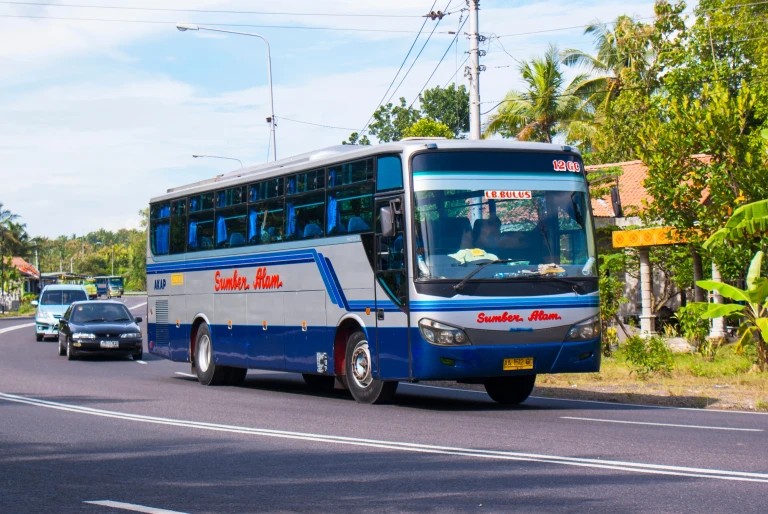
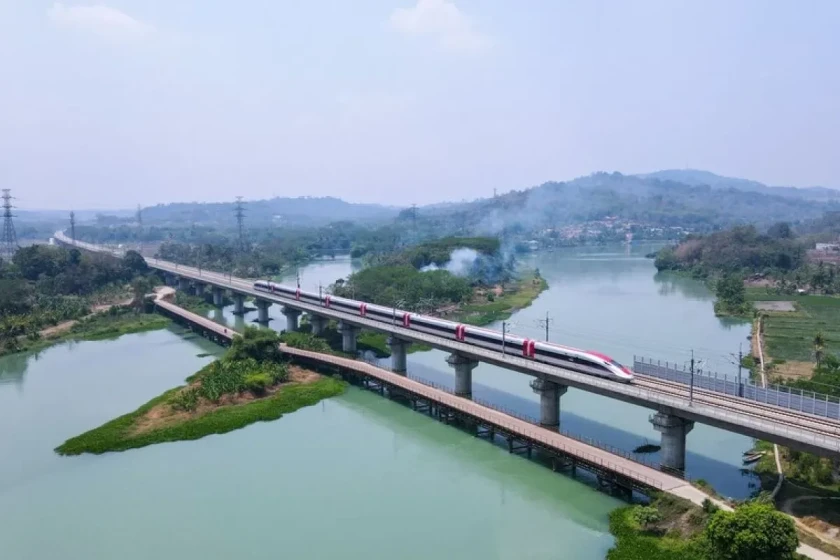
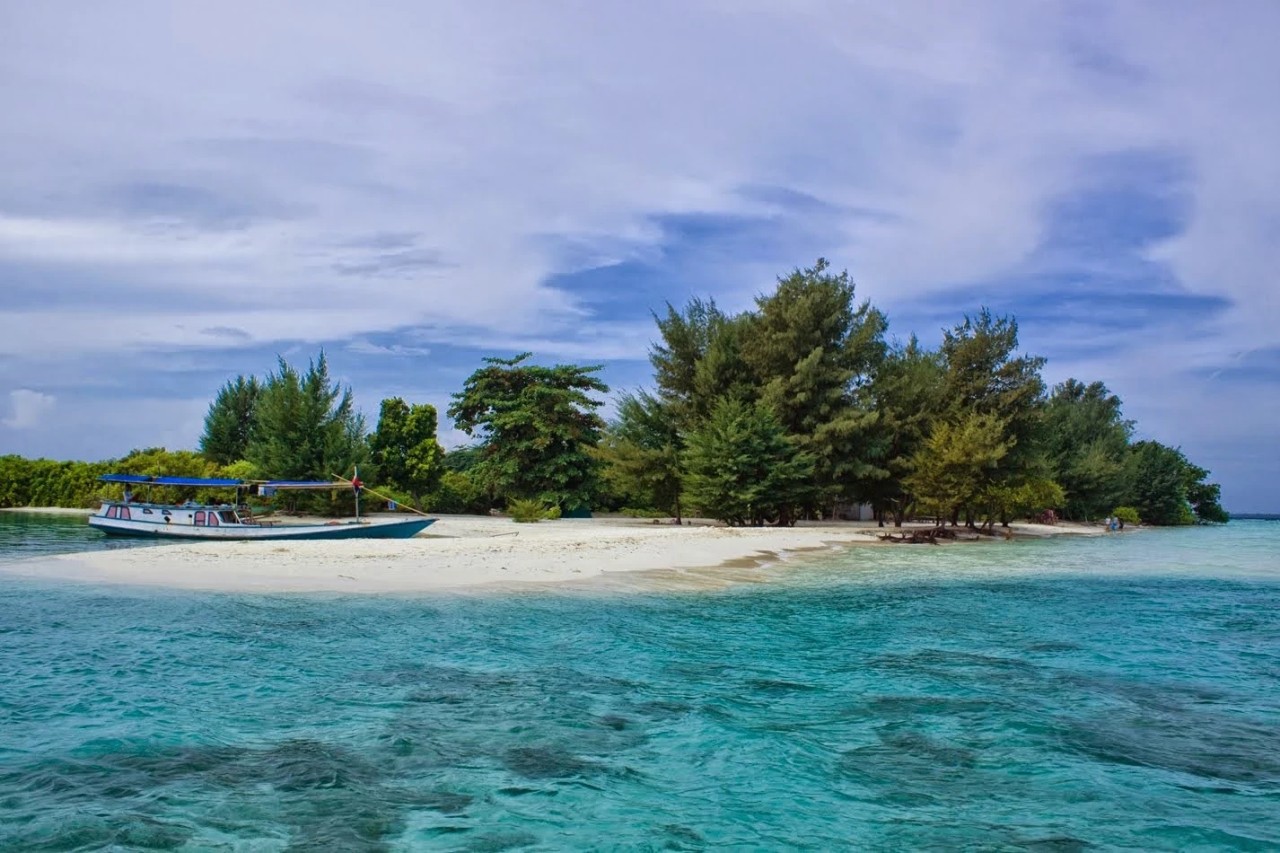
You can add one right now!